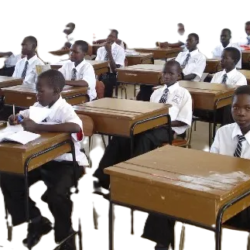Ganvié, situated on Lake Nokoué in Benin, is one of the world’s largest and most extraordinary stilt villages. Known as the “Venice of Africa,” it is a thriving, water-based community with a rich cultural and historical heritage. Home to over 20,000 people from the Tofinu ethnic group, Ganvié embodies resilience and ingenuity, built upon a foundation of survival and adaptation.
The Origins of Ganvié: A Refuge on Water
Historical Background
- Foundation in the 17th Century: Ganvié was established during the 1600s when the Tofinu people fled to the lake for safety from slave traders.
- The Role of Religion: The slave raiders, primarily from the Fon Kingdom, adhered to religious beliefs that forbade them from waging war or capturing people in water bodies. This restriction made Lake Nokoué a natural sanctuary for the Tofinu.
The Meaning of “Ganvié”
The name “Ganvié” translates to “We survived,” a powerful testament to the community’s resilience and resourcefulness.
Floating Architecture and Infrastructure
Ganvié’s stilt-based structures are integral to its identity, showcasing remarkable adaptability to a life on water.
- Stilt Houses
- Built using bamboo, wood, and other locally sourced materials.
- Elevated on sturdy stilts to withstand seasonal water level changes.
- Community Spaces
- Schools, churches, markets, and even restaurants are built on stilts.
- Social and cultural activities occur in these floating spaces, reinforcing a sense of unity.
- Transport by Canoe
- Wooden canoes, or pirogues, are the lifeblood of mobility in Ganvié.
- These boats are used for commuting, fishing, and transporting goods to the floating market.
The Economy of Ganvié
Fishing and Fish Farming
Fishing is the backbone of Ganvié’s economy.
- Traditional Fishing: Locals cast nets and traps to catch fish in the lake.
- Fish Farming: The Tofinu have perfected the use of underwater corrals, a sustainable technique for breeding and harvesting fish.
Trade and the Floating Market
- The floating market serves as a hub for trading goods like fish, produce, and handmade crafts.
- Visitors can witness local women paddling their canoes laden with colorful wares, creating a vibrant and dynamic scene.
Daily Life in Ganvié
Family and Social Structures
- Families live in stilt houses, with extended households often sharing interconnected spaces.
- Social gatherings and celebrations often occur on communal platforms or in floating buildings.
Education and Religion
- Schools are built on stilts, allowing children to access education despite their waterborne lifestyle.
- The community practices a mix of traditional beliefs and Christianity, with churches playing a central role in spiritual life.
Cultural Significance and Recognition
UNESCO Recognition
Ganvié is recognized by UNESCO for its cultural and historical importance.
- Its origins and survival narrative are a powerful symbol of resistance and innovation.
- The unique stilt architecture and sustainable way of life highlight the harmony between human habitation and the natural environment.
Preservation of Heritage
Efforts are underway to preserve Ganvié’s unique culture while balancing the needs of modernization and tourism.
Tourism in Ganvié
Ganvié attracts visitors from around the world, drawn by its rich history and picturesque setting.
- Boat Tours
- Tourists explore the village by canoe, guided through its waterways to witness daily life and historical landmarks.
- Local guides share stories of Ganvié’s origins and traditions.
- Cultural Experiences
- Visitors can observe traditional fishing techniques, visit the floating market, and enjoy local cuisine.
- Artisans craft and sell souvenirs, including hand-carved wooden sculptures and textiles.

Challenges and the Future
Environmental Concerns
- Pollution in Lake Nokoué threatens the delicate ecosystem and the livelihood of the villagers.
- Rising water levels due to climate change pose a risk to stilt structures.
Balancing Modernity and Tradition
- While tourism brings economic benefits, it also risks disrupting the traditional way of life.
- Infrastructure improvements must respect the village’s cultural and historical integrity.













